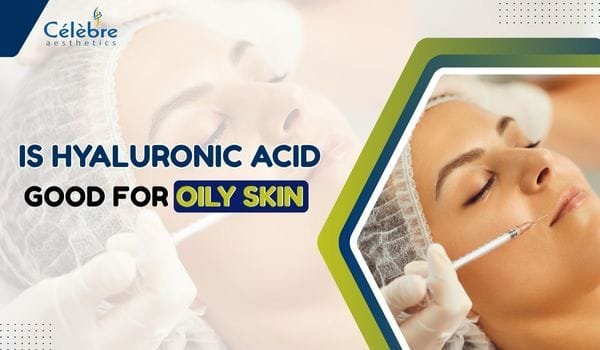
Getting a hair transplant is a major step you take to regain your confidence and enhance your appearance. But as with any medical procedure, your journey doesn’t end when you leave the clinic after a hair transplant. It’s just beginning. The first 10 days after your hair transplant are crucial to ensure the best possible results. Proper post-operative care during this period can significantly impact the outcomes of your procedure.
Whether you’ve undergone a Follicular Unit Transplantation (FUT) or Follicular Unit Extraction (FUE), the healing process is vital for every cosmetic procedure. Let’s take a closer look at what to expect 10 days after the hair transplant surgery and understand post-operative care guidelines for the best possible outcome.
What 10 Days After Hair Transplant Looks Like
Day 1-3 After Hair Transplant
In the first few days after your hair transplant, your scalp will likely be swollen and perhaps a bit sore. It is completely normal and is simply your body’s response to the surgery. During this time, avoid direct sunlight and take any prescribed medication your doctor has prescribed.
The transplanted area may develop crusts and scabs as early as 24 hours post-surgery. Do not panic because this is a natural part of the healing process. However, you should not touch, massage, or pick at the area, as this could damage the newly implanted grafts.
Post-Operative Care Guideline During Days 1-3
- Take any painkillers or anti-inflammatory medications your doctor has prescribed to manage discomfort and reduce swelling.
- Follow your surgeon’s instructions carefully when it comes to cleaning your scalp. Usually, cosmetic surgeons recommend a mild shampoo and advise you to gently rinse your scalp without applying any pressure.
- When you are going outside, wear a loose-fitting cap to protect your scalp from the sun.
Read More: Thinking About a Hair Transplant? 8 Factors You Need to Know
Day 4-6 After Hair Transplant
By day four, most of the initial soreness should subside and you can see the swelling decrease. The scabs become more prominent at this stage. You should still avoid any strenuous activities, as your scalp needs time to heal without additional stress.
You may experience some itchiness as your scalp heals, which is a good sign that the recovery process is on track. However, you have to resist the urge to scratch. This can dislodge the grafts and potentially lead to an infection.
Post-Operative Care Guideline During Days 4-6
- Refrain from any exercises or activities that could cause sweating, which could introduce bacteria to the healing area.
- Follow the gentle cleansing routine as directed by your surgeon to ensure that the scalp remains clean and free from any build-up.
Day 7-9 After Hair Transplant
As you approach the end of the first week, you’ll notice that the scabs are starting to fall off on their own. By day nine, the grafts should be secured in your scalp, indicating that you have successfully overcome the most delicate part of the recovery process.
During this time, the redness and swelling will most likely subside, and your scalp will start returning to its normal color. You might also observe some hair shedding from the transplanted follicles. The follicles are just entering a resting phase and will start producing new hair in the coming months.
Post-Operative Care Guideline During Days 7-9
While it’s okay to wear a loose cap at this stage, avoid tight hats or anything that might rub against the scalp and disturb the healing process.
How Does a Hair Transplant Look After 10 Days?
10 days after hair transplant surgery, you should be feeling much more comfortable and your donor site should have recovered well. The area will start regaining its original color and should show no further signs of swelling or inflammation.
The healing process here is usually quicker than at the transplant site. The tenderness usually subsides, and most of the scabs fall by this time.
However, you might still notice some hair shedding 10 days after hair transplant surgery. This is still part of the “shock loss” phase and is entirely normal. It’s also the time to start being more mindful of your post-operative care, as the grafts are now at a crucial stage where they’ve started getting blood supply.
Post-Operative Care Guideline for 10 Days After Hair Transplant
At this time, you can begin to introduce your usual hair care products. But you should still be gentle and avoid using any harsh chemicals.
You still need to protect your scalp from direct sunlight. UV rays can damage the healing skin and grafts, so wearing a hat or scarf is still advisable.
Although it’s rare, if you notice any signs of infection such as excessive redness, swelling, or the presence of pus, contact your doctor immediately.
Signs of Complications 10 Days After Hair Transplant
While some scalp itchiness or tenderness is normal when your scalp heals, you should closely monitor for any signs of complications. Contact your hair transplant surgeon if you notice any of the following:
- Pustules or pimples around your grafts or on your donor area
- Persistent scalp redness, inflammation, or soreness
- Unusual scalp or facial swelling
Read More: 9 Hair Care Myths You Need to Stop Believing Now
The Dos and Don’ts of Post-Transplant Care
Now that you’ve reached the 10-day mark, here’s a simple guide to what you should and shouldn’t do to ensure your hair transplant recovery continues smoothly:
Things to Do
- Follow Your Surgeon’s Instructions: Your doctor knows best, so stick to the hair care routine they’ve provided.
- Take Medications as Prescribed: Take any prescribed medications on time, and consult your doctor if you’re taking other medications for additional health concerns.
- Stay Hydrated: Drink plenty of water to accelerate the healing process after hair transplant surgery.
- Maintain a Healthy Diet: Eating a diet rich in vitamins and minerals will support your overall health and ensure better results after your hair transplant.
Things to Avoid
- Avoid Strenuous Activity: Avoid activities that cause sweating to reduce the risk of infection.
- No Smoking or Alcohol: Both smoking and drinking can disrupt your body’s natural healing process after hair transplant surgery.
- Don’t Pick or Scratch: Avoid the urge to pick at scabs or scratch your scalp, as this can damage the grafts.
- Limit Sun Exposure: Stay out of the sun as much as possible, and always cover your scalp when outside.
- Avoid Harsh Hair Products: Stay away from styling products, harsh shampoos, or conditioners until your doctor permits.
- Limit Caffeine Intake: Excessive caffeine can interfere with the healing process after hair transplant surgery.
Read More: The Ultimate Guide to Preventing and Treating Hair Damage
What’s Next?
The first 10 days after hair transplant surgery are just the beginning of your recovery journey. You may not see visible results for at least 2 to 3 months, and the new growth will likely be thin and wispy at first. Since the effects of the transplant are usually visible after 10 to 12 months, you have to be patient and follow your aftercare routine for the best results.
Every individual’s recovery timeline will be slightly different, so avoid comparing your progress with others. Stay positive, follow your doctor’s instructions, and watch as your transformation takes shape.
Start Your Hair Transplant Journey with Celebre Aesthetics
If you’re considering a hair transplant, Celebre Aesthetics in Surat is your ideal destination. Led by Dr. Sidharth Sakhiya, a board-certified plastic surgeon with over a decade of expertise in the field, Celebre Aesthetics is renowned for its cosmetic procedures. Dr. Sakhiya and his highly experienced team provide personalized care tailored to your unique requirements.
The clinic is equipped with world-class equipment and advanced techniques, ensuring that every procedure is carried out with precision and care. Their state-of-the-art facility is designed to offer the highest standards of safety and comfort, making your hair transplant experience as smooth as possible.
Contact us to schedule a consultation.








